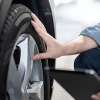
Commercial fleet insurer McCarron Coates has warned that the cost of vehicle repairs now outweighs those of personal injury claims for the first time in many years, which could impact on the cost of insurance premiums.
These costs are partly driven by post-Brexit shipping issues making it harder to obtain parts, as well as general labour shortages.
The greatest contributing factor to rising repair costs, however, is the ever-increasing complexity of the repairs which are needed. There are few simple repairs now, with so many different and interlinked electronic components within vehicles that any reasonably significant prang is likely to see many parts of a vehicle needing to be replaced.
Electric vehicles exacerbate the issue. The battery is a hugely expensive part of an EV, and any damage to it is likely to result in a large repair bill or often a total write-off. The cost of an EV claim is also influenced by repair delays, with an EV repair taking significantly longer to complete than one on a vehicle with an internal combustion engine (ICE). Sometimes, an EV has to be sent to a specialist repair centre, meaning the time off the road – and time during which an expensive hired vehicle might be required – is even longer, further contributing to rising total cost.
McCarron Coates believes some insurers have not yet been able to accumulate enough knowledge with which to calculate the right level of insurance premium for the EV risk and so are levying extremely high compulsory excesses, of a level of around £1500, rather than the £500 we might expect to traditionally see on a fleet policy.
The insurance broker’s advice to fleet transport operators is to do all they can to manage their risks on the road better, seeking to avoid the accidents that could land their vehicles in the repair cycle, for some time. +The focus should be on enhanced driver training, an analysis of individual drivers’ weak points, so that these can be addressed, and on the use of telematics, to help increase driver awareness of the hazards around.
Within van fleets, the fleet operator should be encouraged to find ways to give the driver ownership of their own vehicle. One way of doing this could be by accessing better van purchase options – giving each driver responsibility for their vehicle, or to incentivise drivers to better protect the vehicle of which they are in charge.
Monitoring systems for driver behaviours should be focused on the speed at which vehicles are being driven. Whilst Covid-19 has led to fewer vehicles being on the road, the value of the claims being experienced is far higher than was the norm pre-Covid, as the accidents are proving more severe. Speed is the major reason for that.
IAM RoadSmart offer excellent solutions to organisations looking for fleet risk management and enhanced driver training – both can help reduce collisions and the hefty costs that they bring.
Get in touch and find out how we can help.



